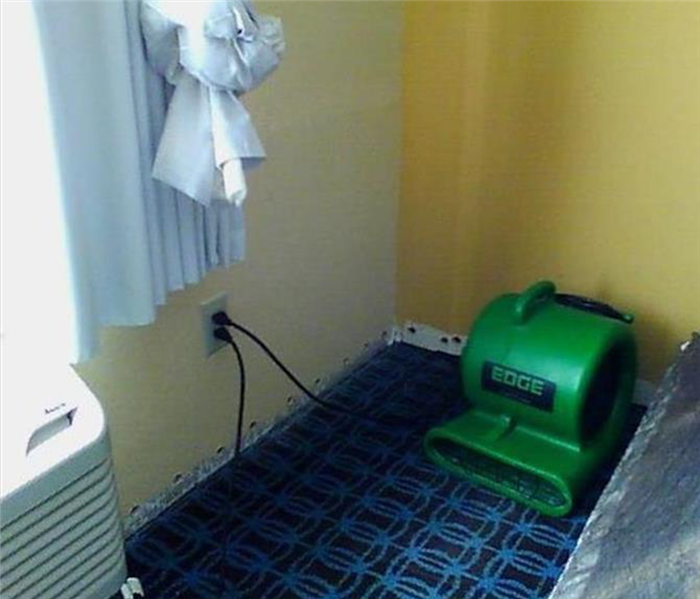Did You Know: A Water Damaged Wall Can Be Dried & Restored, Rather Than Replaced?
5/10/2022 (Permalink)
 Drilling small holes along the bottom of the wall and ventilating the wall cavity can greatly reduce drying time.
Drilling small holes along the bottom of the wall and ventilating the wall cavity can greatly reduce drying time.
So a plumbing leak or other water intrusion leaves you with wet walls. Here’s the question we at SERVPRO often get: Do the walls have to be removed and replaced? Well, it depends.
In the past, restoration practices called for the replacement of wet drywall from walls. Today there is technology that allows SERVPRO to save walls by drying them, which significantly reduces restoration costs.
It’s part of SERVPRO’s restore vs. replace philosophy, and it can save homeowners (or businesses) a bundle.
Factors to Consider & Steps Involved
When floodwaters or sewage have entered the home—or when structural integrity has been compromised--industry standards require the removal of porous building materials. In most other cases, saving a wall is possible when a skilled restorer such as SERVPRO of Jacksonville Northwest uses the appropriate techniques.
A common impediment to effectively drying walls is a vapor barrier, which is a material that impedes the evaporation of moisture from walls or other materials. Removing the outer vapor barrier or perforating gloss paint expedites the drying process.
Another consideration is insulation. A wall may contain fiberglass, spray foam, or blown-in insulation. Blown-in fiberglass can compact and move down the wall cavity when it becomes wet. When this happens, the insulating properties of the materials cannot be restored. The insulation will need to be removed and replaced. Fiberglass insulation with paper backing can usually be successfully dried using air injection or similar methods. Sprayed-in insulation usually needs to be removed.
Drying can be accelerated by drilling small holes along the bottom of the wall and ventilating the wall cavity, greatly reducing drying time. When drying is complete, these holes are patched or, ideally, covered by baseboard. The process described above is faster and less expensive than removing and replacing walls.
SERVPRO’s IICRC-certified technicians employ a specific set of standards that incorporate the field of psychometry, which involves the manipulation of temperature and relative humidity, and special equipment to measure and remove moisture and to dry a property quickly and effectively.


 24/7 Emergency Service
24/7 Emergency Service